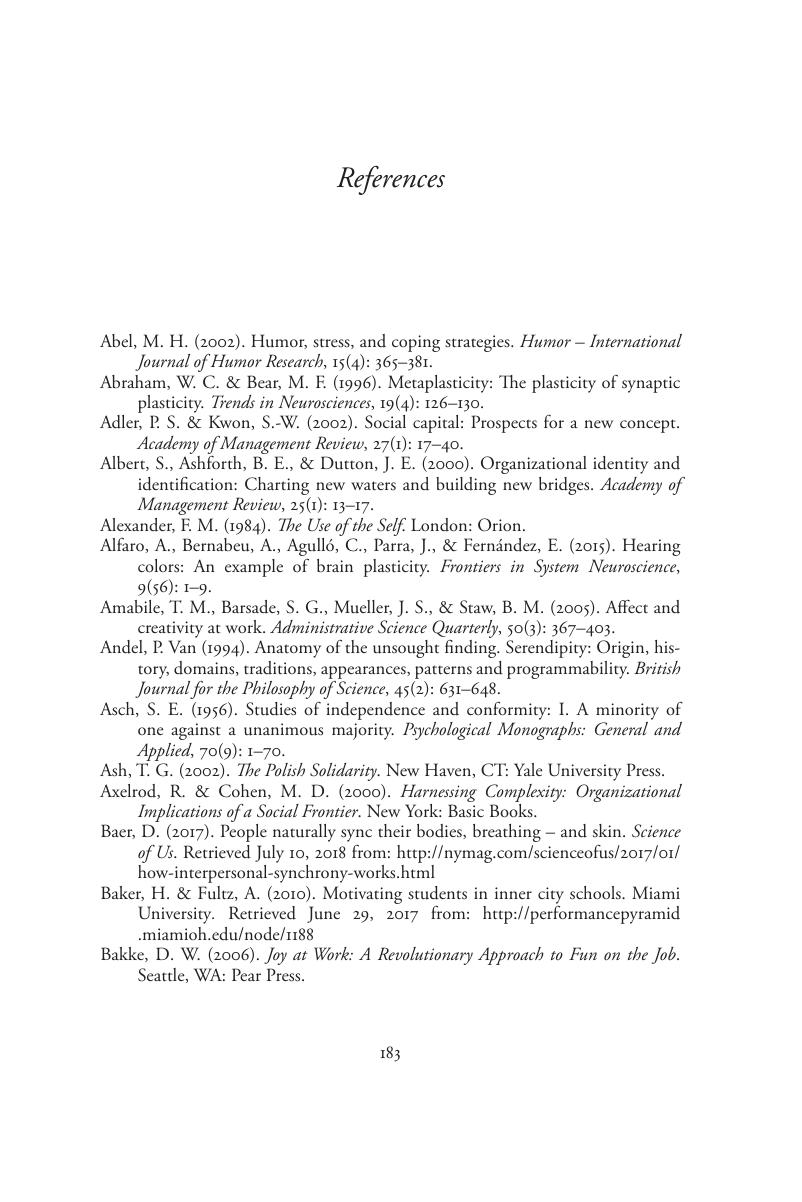Book contents
- Working Wonders
- Working Wonders
- Copyright page
- Contents
- Figures
- Acknowledgments
- Author’s Note
- Introduction
- Part I Those Who Made the Impossible Happen
- Part II Entrenching and Defending the Fortress
- Part III Opening the Mind
- Part IV Do-It-Yourself Tips
- Appendix: Measuring Possibilitivity
- References
- Index
- References
References
Published online by Cambridge University Press: 26 July 2019
- Working Wonders
- Working Wonders
- Copyright page
- Contents
- Figures
- Acknowledgments
- Author’s Note
- Introduction
- Part I Those Who Made the Impossible Happen
- Part II Entrenching and Defending the Fortress
- Part III Opening the Mind
- Part IV Do-It-Yourself Tips
- Appendix: Measuring Possibilitivity
- References
- Index
- References
Summary

- Type
- Chapter
- Information
- Working WondersHow to Make the Impossible Happen, pp. 183 - 196Publisher: Cambridge University PressPrint publication year: 2019



